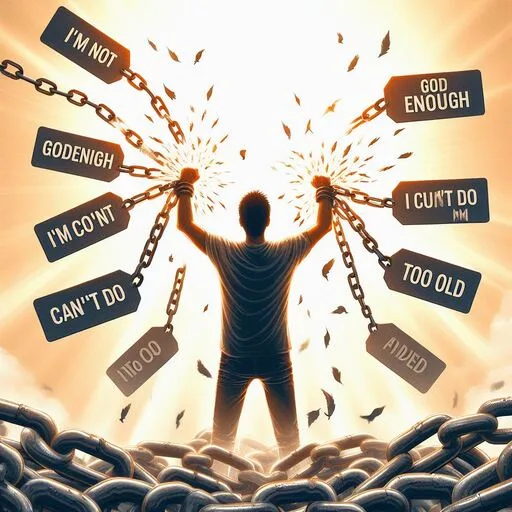
Preface
In the vast breadth of our actuality, we encounter a multitude of stimulants — situations, people, and events — that shape our gests and comprehensions. Yet, amidst this bowwow of external influences, lies a realm of profound significance our internal geography. Herein lies the power of choice — the power to break, choose, and respond. In the trip of internal health, this power isn’t simply a tool but a lamp guiding us towards tone- mindfulness and emotional adaptability.
Chapter 1 Understanding the Dynamics of Response
In the shade of mortal relations, we frequently find ourselves attributing our emotional countries to external forces. We condemn circumstances, people, or events for causing happiness, wrathfulness, pain, or fear. still, beneath this façade of victimhood lies a abecedarian verity our responses are our internal creations. Consider a script where someone’s action triggers wrathfulness within us. While it may feel that the external action caused our emotional fermentation, it’s our interpretation and response to that action that dictates our emotional state.
To illustrate, let’s claw into the story of Sarah. Sarah’s coworker makes a disparaging comment about her work during a platoon meeting. originally, Sarah feels a swell of wrathfulness and demotion, condemning her coworker for her emotional torture. still, upon soul-searching, Sarah realizes that her coworker’s comment simply acted as a catalyst; the intensity of her emotional response was shaped by her own precariousness and tone- mistrustfulness. This consummation empowers Sarah to reclaim control over her feelings by purposely choosing her response.
Chapter 2 Cultivating Conscious Response
The trip towards internal well- being begins with cultivating mindfulness and intentionality in our responses. We can not control external circumstances, but we hold the power to shape our internal geography. This entails a conscious trouble to break, reflect, and choose our response, rather than replying impulsively grounded on hardwired patterns or conditioned responses.
Consider the analogy of a theater . Just as a gardener tends to the soil, sowing seeds of positivity and nurturing growth, we must cultivate our minds with studies that foster emotional adaptability and well- being. Every study we entertain is a seed planted in the rich soil of our knowledge, impacting our comprehensions and responses to the world around us.
Let’s readdress Sarah’s story. rather of succumbing to her original impulse of lashing out in wrathfulness or retreating into tone- mistrustfulness, Sarah pauses to examine her emotional geography. She purposely chooses to respond with compassion and fierceness, addressing her coworker’s comment with grace while reaffirming her tone- worth. In doing so, Sarah transcends the cycle of reactivity, laying the foundation for emotional stability and commission.
Chapter 3 Embracing particular Responsibility
Central to the paradigm of conscious response is the principle of particular responsibility. We’re the engineers of our own gests , responsible for the studies, feelings, and actions we manifest in the world. By relinquishing the narrative of victimhood and embracing agency, we reclaim the power to shape our reality.
Let’s consider the language we use to describe our gests . Expressions like” He wronged me, so I was worried” or” Her geste infuriated me” immortalize the vision of external reason, buttressing a sense of incompetence. rather, by reframing our narratives to emphasize particular agency —” I chose to feel worried in response to his conduct” we reclaim our autonomy and agency.
Returning to Sarah’s trip, she recognizes that her emotional well- being isn’t contingent upon external confirmation or blessing. She takes power of her emotional responses, admitting that while she can not control her coworker’s geste , she can choose how she interprets and responds to it. In doing so, Sarah liberates herself from the impediment of victimhood, embracing her essential power to navigate life’s challenges with grace and adaptability.
Chapter 4 Nurturing Emotional Stability
The foundation of internal health falsehoods in nurturing emotional stability — a state of inner equilibrium that remains untroubled by external oscillations. While external circumstances may be beyond our control, we retain the essential capacity to cultivate a sense of calmness, happiness, and peace within ourselves.
Imagine a serene lake, unperturbed by the ripples of passing storms. also, cultivating emotional stability entails cultivating inner tranquility amidst the turbulence of life’s challenges. This requires a holistic approach encompassing awareness practices, emotional regulation ways, and tone- care rituals.
Returning formerly more to Sarah’s trip, she embarks on a path of tone- discovery and mending, incorporating awareness contemplation, journaling, and tone- reflection into her diurnal routine. Through these practices, she learns to observe her studies without judgment, cultivating a sense of inner calmness and clarity. As a result, Sarah becomes less reactive to external stressors, embodying a newfound sense of adaptability and imperturbability.
Chapter 5 employing the Power of Positive Allowing
At the heart of conscious response lies the power of positive thinking — a transformative force that shapes our comprehensions, stations, and gests . By purposely directing our studies towards sanguinity and gratefulness, we harness the essential power of the mind to manifest positive issues and attract cornucopia into our lives.
Consider the analogy of a attraction. Just as a attraction attracts objects of analogous opposition, positive thinking draws forth gests that reverberate with our inner state of positivity. Cultivating an station of gratefulness and sanguinity not only enhances our private well- being but also radiates outward, impacting the people and circumstances around us.
In Sarah’s trip, she embraces the practice of positive declarations, purposely replacing tone- limiting beliefs with empowering studies. rather of dwelling on her perceived failings or once failures, she focuses on declarations of tone- love, adaptability, and cornucopia. Over time, these positive declarations come deeply hardwired in her psyche, shaping her comprehensions and responses to the world with unwavering positivity and grace.
Chapter 6 Conclusion The Journey of Self- Discovery
In the shade of mortal actuality, the trip of internal health is a passage of tone- discovery — an disquisition of the depths of our being and the bottomless eventuality that lies within. Through the power of conscious response, we reclaim agency over our lives, transcending the limitations of external circumstances to cultivate inner peace, adaptability, and joy.
As we navigate the eclipse and inflow of life’s challenges, let us flash back the profound verity that our responses shape our reality. In every moment, we retain the power to break, choose, and respond with intentionality and grace. By embracing particular responsibility, nurturing emotional stability, and employing the power of positive thinking, we embark on a transformative trip towards holistic well- being and fulfillment.
In the words of Viktor Frankl,” Between encouragement and response, there’s a space. In that space lies our power to choose our response. In our response lies our growth and our freedom.” May we recognize the sacredness of that space, embracing the horizonless possibilities that live within, as we trip towards a life of purpose, authenticity, and inner peace.









